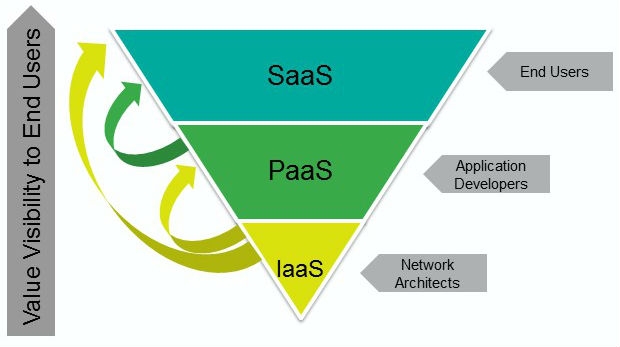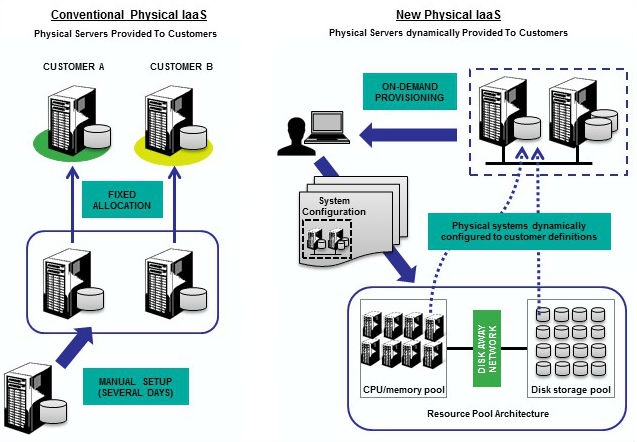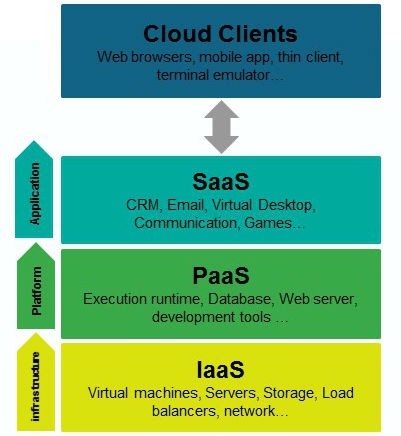
Cloud computing is one of the most important technologies in the world right now, but it can be extremely confusing at times.
What, for example, are SaaS, PaaS and IaaS? Read on as we take the jargon out of the cloud and explain things in a much more brain-friendly way.
SaaS
Cloud application services -- or software-as-a-service (SaaS) -- represent the largest cloud market and are still growing quickly. SaaS uses the web to deliver applications that are managed by a third party vendor and whose interface is accessed on the clients' side. Most SaaS applications can be run directly from a web browser without the need for any downloads or installations, although some require small plugins.
Because of the web delivery model, SaaS eliminates the need to install and run applications on individual computers. With SaaS, it's easy for enterprises to streamline their maintenance and support, since everything -- applications, runtime, data, middleware, operating systems, virtualization, servers, storage, networking, etc. -- can be managed by vendors.

Popular SaaS offering types include email and collaboration, customer relationship management and healthcare-related applications. Some large enterprises that are not traditionally considered software vendors have started building SaaS as an additional source of revenue in order to gain a competitive advantage.
SaaS examples: Gmail, Microsoft 365, Salesforce, Citrix GoToMeeting, Cisco WebEx
Common SaaS use-case: Replacing traditional on-device software
PaaS
Cloud platform services -- or platform-as-a-service (PaaS) -- are used for applications, and other development, while providing cloud components to software. What developers gain with PaaS is a framework they can build upon to develop or customize applications. PaaS makes the development, testing, and deployment of applications quick, simple, and cost-effective. With this technology, enterprise operations, or third party providers, can manage operating systems, virtualization, servers, storage, networking, and the PaaS software itself. Developers, however, manage the applications.
Enterprise PaaS provides line-of-business software developers a self-service portal for managing computing infrastructure from centralized IT operations and the platforms that are installed on top of the hardware. The enterprise PaaS can be delivered through a hybrid model that uses both public IaaS and on-premise infrastructure or as a pure private PaaS that only uses the latter.

Similar to the way in which you might create macros in Excel, PaaS allows you to create applications using software components that are built into the PaaS (middleware). Applications using PaaS inherit cloud characteristics such as scalability, high availability, multi-tenancy, SaaS enablement, and more. Enterprises benefit from PaaS because it reduces the amount of coding necessary, automates business policy and helps migrate apps to a hybrid model.
Enterprise PaaS example: Apprenda
Common PaaS use-case: Increase developer productivity and utilization rates and decrease an application's time-to-market
IaaS
 Cloud infrastructure services -- known as infrastructure-as-a-service (IaaS) -- are self-service models for accessing, monitoring, and managing remote data center infrastructures, such as compute (virtualized or bare metal), storage, networking, and networking services (e.g. firewalls). Instead of having to buy hardware outright, users can purchase IaaS based on consumption, similar to payment for electricity or other utilities.
Cloud infrastructure services -- known as infrastructure-as-a-service (IaaS) -- are self-service models for accessing, monitoring, and managing remote data center infrastructures, such as compute (virtualized or bare metal), storage, networking, and networking services (e.g. firewalls). Instead of having to buy hardware outright, users can purchase IaaS based on consumption, similar to payment for electricity or other utilities.
Compared to SaaS and PaaS, IaaS users are responsible for managing applications, data, runtime, middleware and operating systems. Providers still manage virtualization, servers, hard drives, storage, and networking. Many IaaS providers now offer databases, messaging queues, and other services above the virtualization layer as well. Some tech analysts draw a distinction here and use the IaaS+ moniker for these other options. What users gain with IaaS is infrastructure on top of which they can install any required platform. Users are responsible for updating these if new versions are released.
IaaS examples: NaviSite NaviCloud, Amazon Web Service (AWS), Microsoft Azure, Google Compute Engine (GCE)
Common IaaS use-case: Extending current data center infrastructure for temporary workloads (e.g. increased Christmas holiday site traffic)
Vivek Vahie is the senior director of service delivery at NaviSite
Published under license from ITProPortal.com, a Net Communities Ltd Publication. All rights reserved.

